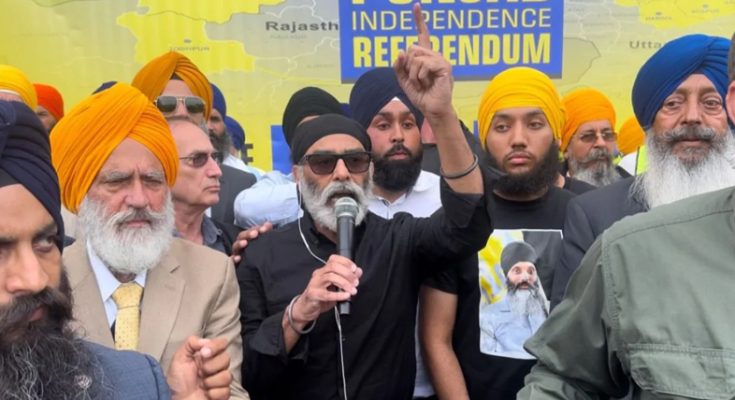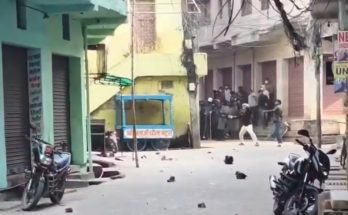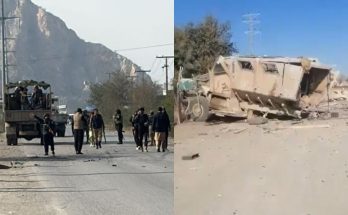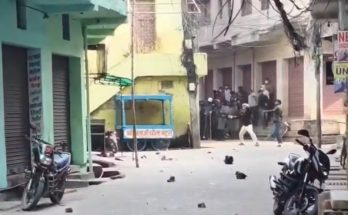The acceptance of a recent statement of India’s leader of Opposition, Rahul Gandhi on Sikh by the Sikh Extremist based in US and Canada has shown a clear line of division of opinion amongst themselves.
Gandhi claimed that Sikhs in India face an “existential threat” to their right to practice their faith freely, citing symbols such as the turban and kada as under siege.
This statement was quickly embraced by Gurpatwant Singh Pannun, a prominent U.S.-based pro-Khalistan extremist and leader of the banned Sikhs for Justice (SFJ), who used it to validate the group’s campaign for Khalistan.
However, beneath the surface of this apparent unity lies a growing rift within the movement. While Pannun and SFJ see Gandhi’s statement as an opportunity to further their cause, many pro-Khalistan elements remain skeptical.
For them, aligning with any member of the Gandhi family is unthinkable, given the trauma inflicted on the Sikh community during the 1980s.
Indira Gandhi, Rahul’s grandmother, authorized Operation Blue Star, a military action that many Sikhs view as a desecration of the Golden Temple, leading to a legacy of violence and pain that still reverberates today.
This schism within the movement reflects a larger issue. The SFJ, which claims to champion Sikh sovereignty, has shown a willingness to manipulate political moments to serve its agenda.
Yet many Sikhs remain unconvinced, viewing the group’s support for Gandhi’s comments as contradictory.
While the movement claims to fight for Sikh rights, its willingness to align with figures like Gandhi reveals deeper motivations—more about self-interest than genuine advocacy for the Sikh community.
For years, the Khalistan movement has portrayed itself as a grassroots struggle for Sikh self-determination.
But the growing fragmentation within its ranks suggests otherwise. Younger Sikhs, particularly in the diaspora, are being drawn into the movement based on narratives of cultural survival and resistance.
In reality, the movement has been co-opted by extremist voices like SFJ, eager to exploit historical grievances for their own gain.
Rather than fostering genuine dialogue and addressing contemporary challenges facing Sikhs, such as unemployment and drug abuse, these actors perpetuate cycles of fear and division.
The irony is stark: while pro-Khalistan elements decry past injustices, they often overlook the damage caused by their own disunity and manipulation. By endorsing Gandhi, SFJ further alienates Sikhs who remain deeply suspicious of the Congress party’s historical role in their suffering. This division underscores that the movement, as it currently stands, lacks a unified vision and has drifted far from its original mission of empowerment.
The opinion of Sikhs for Justice (SFJ) differs significantly from the broader Khalistan sentiment. Just as Rahul Gandhi’s statement has exposed a divide among pro-Khalistan elements, similar disagreements have recently emerged in France and Italy. In France, Khalistani leaders split into two factions, primarily due to a power struggle over control of the Gurdwara Singh Sabha, the largest gurdwara in Paris and a hub for Khalistani activities, which also receives substantial donations. Likewise, in Italy, a conflict between two factions at the Gurdwara ‘Chaar Sahibzaade’ in Casalpusterlengo, Lodi, led by Sukhwinder Singh (Shinda) and Manjit Singh, has escalated to the point where the gurdwara has been shut down, creating deep divisions within the local Sikh community.
These divisions in opinion reveal that the Khalistan movement is increasingly being used as a self-serving shield by certain individuals and factions. Instead of working towards genuine empowerment or addressing real community issues, these groups exploit the cause to gain influence, power, and control—whether over gurdwaras, donations, or political narratives.
Sikh youth, both in India and the diaspora, deserve more than to be pawns in a fractured movement focused on exploiting historical grievances for political gain.
The growing divides within the pro-Khalistan camp are not just about political allegiances—they reveal deeper, shifting motivations behind the cause.
As factions break ranks over issues like support for Rahul Gandhi, it becomes increasingly clear that the Khalistan movement is being used by a select few for personal ambition rather than the collective future of the Sikh community.
Ultimately, the future of Sikhs must be shaped by dialogue, democracy, and genuine representation—not by those who seek to exploit history for their own purposes.
The dream of Khalistan appears less about the Sikh community’s collective future and more about the ambitions of a few.
As the movement continues to fracture, we must ask: Who truly benefits from this push for separatism, and at what cost?
(Image and text courtesy: Khalsavox.com)





